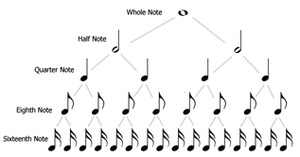
 VERY YEAR I SPEND the first four or five weeks of Probationer rehearsals teaching basics: standing and breathing properly, developing a beautiful tone, singing the major scale up and down to a light accompaniment (which doesn’t include the melody), learning note names, learning simple staff nomenclature and proficiency in rhythms. Today I want to share with you a struggle I perpetually encounter teaching rhythms.
VERY YEAR I SPEND the first four or five weeks of Probationer rehearsals teaching basics: standing and breathing properly, developing a beautiful tone, singing the major scale up and down to a light accompaniment (which doesn’t include the melody), learning note names, learning simple staff nomenclature and proficiency in rhythms. Today I want to share with you a struggle I perpetually encounter teaching rhythms.
Since learning about Takadimi and using it with children in class, rhythm proficiency has greatly improved. In the past I taught the Takadimi syllables while calling the notes by their traditional names, such as quarter note, eighth note, etc., but students were still confused. Think about it from the point of view of a third grader. It must be terribly confusing that an eighth note receives only half a beat, while an actual half note gets two beats. Or what about a dotted quarter note that receives one-and-a-half beats, but when it is the first note in the measure, it is held until beat two-and-a-half because in music the singer starts counting the measure at one instead of zero.
The main reason I continued to teach these names was because everywhere else the child went, he encountered these names. Well, today I decided to buck the system (in spite of my general LOVE of tradition) and simply referred to the various notes by their Takadimi syllables. Lo and behold, the students made the change quickly and clapped their rhythms almost flawlessly. Perhaps it would be best to approach rhythms this way until students were so familiar with sight-reading rhythms that introducing the traditional note names wouldn’t present any difficulties. If any of our readers have stumbled upon better ways to teach rhythms I would be curious to know. In many ways I feel it is more important that a piece be sung rhythmically well than to be sung with 100 percent note accuracy. I find music with rhythmic vitality much more moving.
Finally, for any of our readers in Detroit, I will be presenting at the archdiocese’s music and liturgy workshop, In Service of the Sacred. I will be discussing chorister training as well as working through some of these concepts with a group of school children from the city. If you happen to be at the conference, please say hello!

